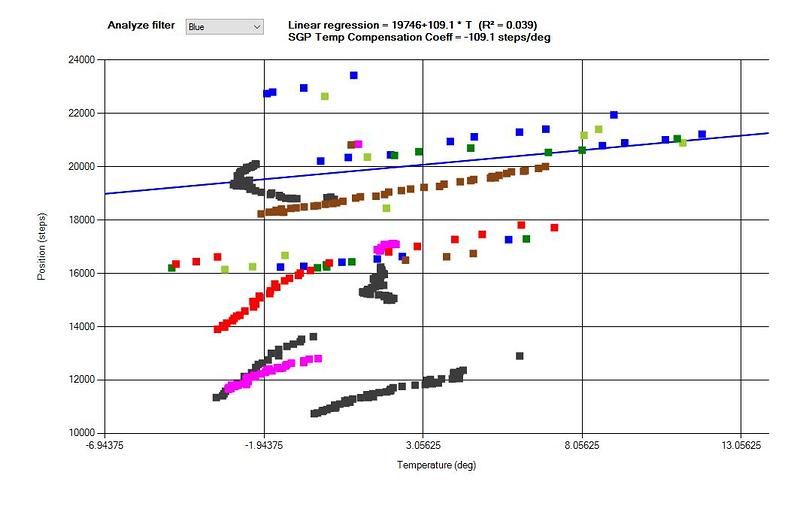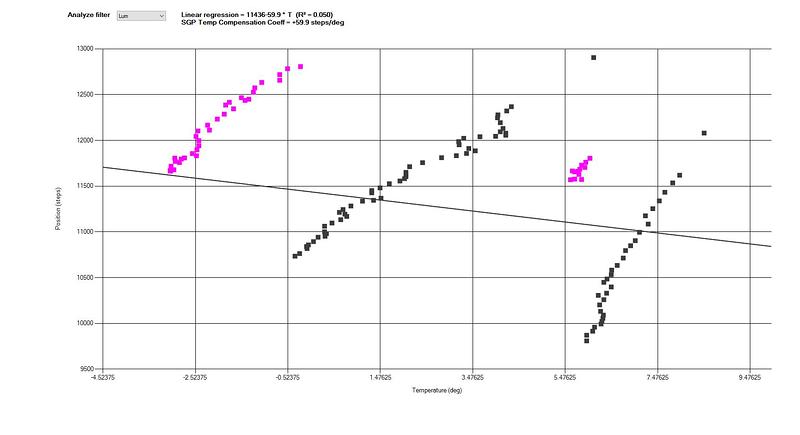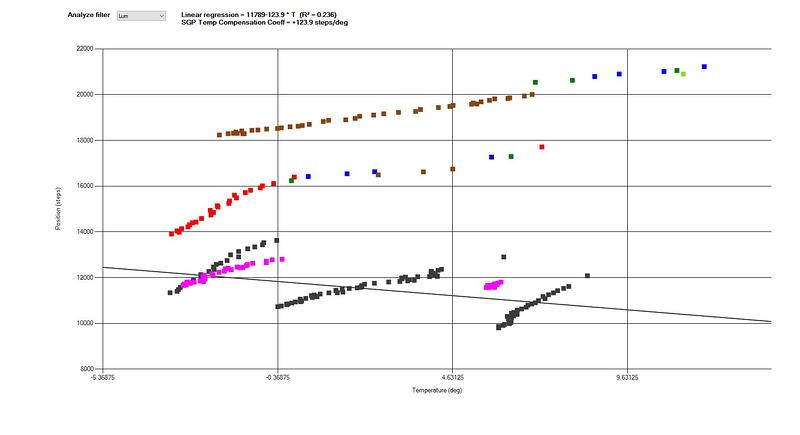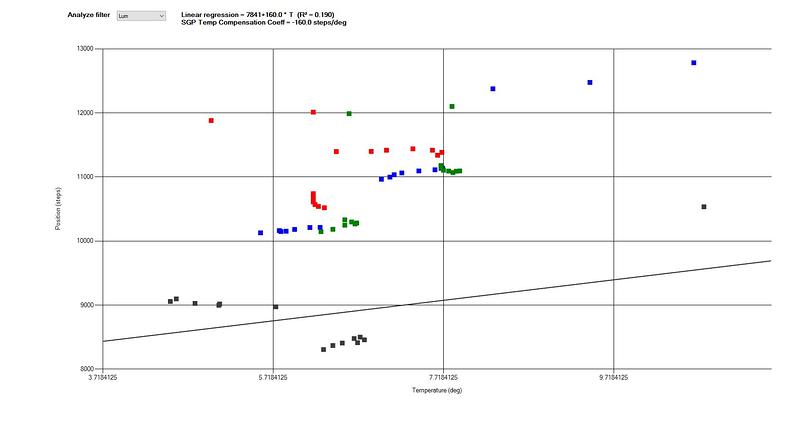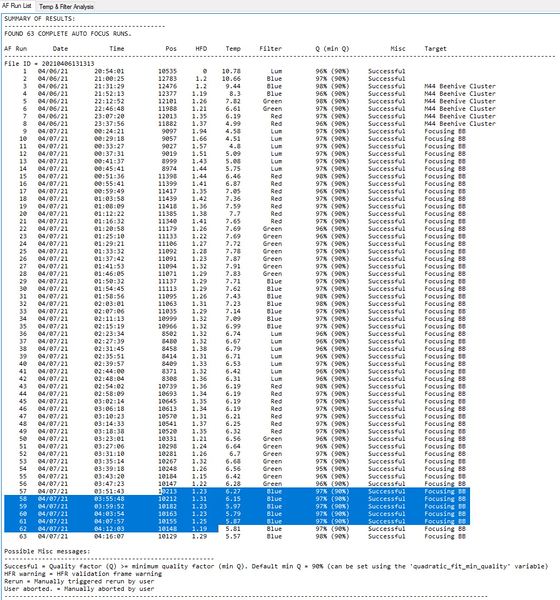Mike,
You deduce correctly! The data is for sessions taken on several different nights, and with a couple of exceptions, the data from any individual session are coherent and behave as expected (e.g. the Ha are all on one night, and the several Lum series behave correctly within each session).
It is a portable setup, but one I leave up for several nights at a time (weather permitting). I don’t change anything about the configuration, simply left the OTA off the mount and carry it 20 feet from my garden to a shelf in my office, then back again. Everything in the imaging chain is threaded.
The focuser itself is a moonlite nite crawler, with absolute encoders.
Unless I am doing the calculations incorrectly, the range of 8000 steps equals roughly 2000 microns, which is roughly 2mm, which while still small, makes me think that this is not likely due to mechanical differences.
I agree with your approach to calculating temperature coefficient slopes, given that they seem to be consistent between sessions for at least some of the filters, and have been playing with that. But my bigger concern at the moment is how to have confidence in the focusing results when the optimal focus position, at a given temperature can differ by 40x the size of my critical focus zone.
I did another session last night, without having moved the scope at all, so no mechanical disturbances to consider. The graphic below plots the results for two consecutive nights, equipment untouched:
As you can see, the slopes are reasonably consistent (so I am inclined to believe the temperature compensation data there), but based on this, the focus position for the Lum filter could be the same across a 6C temperature range, despite the fact that there is a relatively acute slope for temperature changes. Those two facts seems inconsistent. With the slope shown, it cannot be the case that optimal focus is found at 11,500 steps for both 1.47C and 7.5C.
I am a bit mystified. The ironic thing is that i haven’t noticed a problem in my imaging, but then I am relatively new to this hobby, so not sure I have a critical enough eye yet.
It seems like, for a given filter, SGP is finding multiple, significantly different focus points as equally optimal solutions at significantly different temperatures. That worries me, as it means I can’t rely on the accuracy of the initial focusing runs at the start of a session. Given the low likelihood of mechanical slippage in my system and the fact that this problem appears even when I do not move the system between sessions, I’m inclined to wonder if there is a problem in my SGP autofocus configuration.
I wonder if perhaps there is a problem with my settings? My sampling is 3.5" on this system and I am using 2x2 binning for focusing. Could that be creating discontinuities with the HFD calculation? Should I have a particular setting for minimum star size?
I use an auto focus step size of 650, calculated in the manner instructed in the help file, which consistently gets me a range of HFDs that is 3-4x the “in-focus” range. I could try a smaller number for step size, but that will being me under the 3x-4x top to bottom range recommended in the help file.
I have tried tightening the focus success criteria to 98%, but to my chagrin, the system can’t seem to achieve better than 96% with consistency. While that seems pretty good to me, perhaps that in itself is an indication of an issue, given that I am using a refractor with a very tight imaging chain?
Open to any and all help, as I would really like to figure this out.
If it helps, below is another graph with the results from the two sessions in the graph above, plus a couple of earlier dedicated focusing sessions. Each of the Lum lines is on a different night, as is each of the SII lines. The Ha lines and the Red line were each taken on one night. As you can see, apparently the optimal Lum focus position at 7C is 12,000, and that is also the optimal focus position at -2C. The slope of the Lum line in each session would indicate that the optimal focus points at those two different temperatures would be different by ~3,600 steps.
